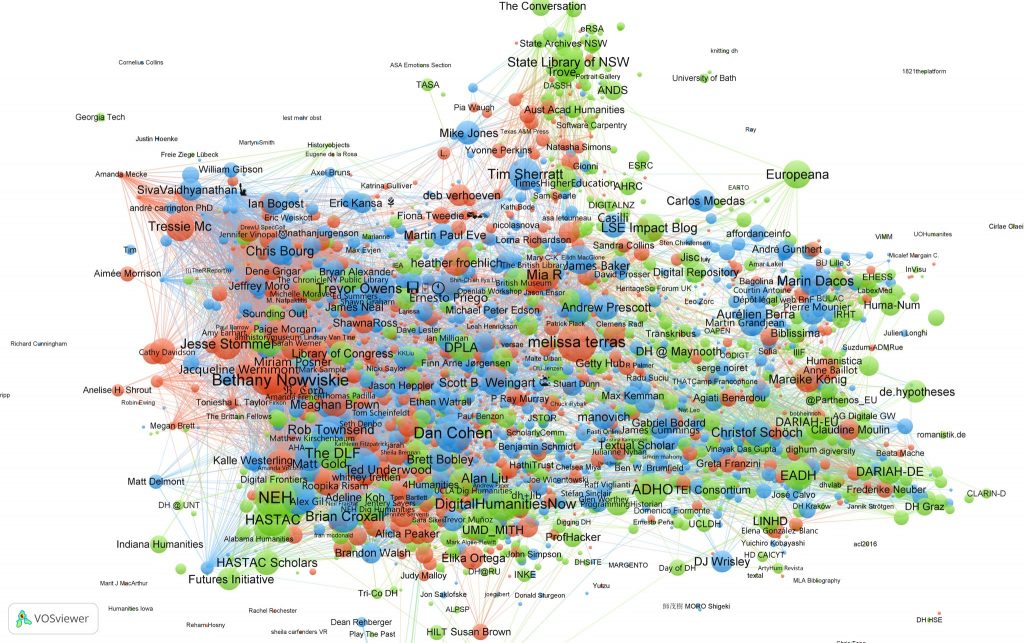Digital Humanities as Community
Debates over the definition of the Digital Humanities are by this point very clichéd, to the point that many people have begun arguing that we stop worrying about it altogether. There is a building consensus that DH, however you define it, is above all a community, or if you like a social network; specifically, a community of practice that is open, public, collaborative, and above all welcoming.
The main thing you have to do to get involved, is to just get involved. Express your interest by joining the community. One of the main ways people do that is by posting, blogging and tweeting their ideas, projects, and questions publicly on various platforms. Twitter is probably the primary vehicle for this (as illustrated by the diagram below which visualizes the DH community through a network of “co-retweets;” that is, people who like to share the same stuff).

Blogging 101
But blogs are the original twitter, and still a very valuable means of long-form expression, engagement and project sharing. In the DH world, the HASTAC community is a good example of a very large and long-standing network whose main connective activity continues to be its collaborative blog.
To begin to join this world, you will all be reading, writing, and sharing what we do this term on this blog and your own, which we’ll set up next week. This is not just about trying out the digital humanities. It is also about practicing skills that will serve you well beyond your college career no matter what you choose to do. Having control over your internet presence is crucial in this day and age, and building your own website is one of the best ways to craft and maintain a public, online identity.
In Class
For starters, you’ll register for this class site so you can comment on assignments, post to the blog and get familiar with the WordPress interface, if you aren’t already.
Follow these instructions to
register for our course site and post your first comment.
Once you’ve done all that…
- Log in to the Hacking the Humanities class blog and make a new post sharing one or more 2D images of your house that you exported from SketchUp and telling us about your process.
- How easy/hard was it?,
- what elements particularly bogged you down?,
- what compromises did you have to make?
- What humanistic uses can you envision for this tool in the areas of research or teaching?
- Make sure to also share a tip for other novice SketchUp users about the tool that you found most useful, or a technique that you wish you had figured out sooner. Part of the digital maker philosophy is sharing the knowledge you gained, so make sure to pass it on.
Congratulations! You have posted your first blog post and can now share your interests and knowledge with the world.
We barely scratched the surface of what you can do with this platform in class, but we will get deeper into the weeds next week as you set up your own WordPress instance with complete administrative control.
Assignment
Your task for next time is to clean up and polish your post, and dig deeper into WordPress to explore some of the dashboard options and authoring tools.
As you write, remember that blog writing is a different beast that lies somewhere between formal academic writing and casual social media or email style. Try for a tone that is scholarly and informed but neither too stiff nor too sloppy. It can be a tough balance to strike, but think of your intended audience and try to find a voice that works for you.
Finally, comment on two of your classmates SketchUp posts
Resources
Carleton College’s own web services group has a lot of good resources for how to write for the web effectively.

